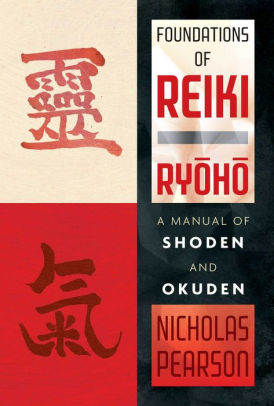Foundations of Reiki Ryoho rediscovers the early roots of Reiki as a spiritual practice. For a Western audience who tends to know reiki as a hands on energy healing method rather than a spiritual practice, the book goes the extra mile exploring facets of Japanese culture and history necessary for understanding Reiki's origins. There is a brief exploration of 19th to early 20th century Japanese history and a review of relevant concepts from Shintoism, Taoism and Buddhism. An almost too thorough exploration of the early lineage of Reiki teachers and their schools is followed by a description of Reiki techniques and practices with the context of whether these are traditional or Western derived methods. Reiki as it stands today has both a very traditional Japanese style that is true to Usui Mikao and some very Western practices pulled from a variety of New Age, shamanic and western magical practices. This book stresses that neither style is wrong and urges the reader to understand what is original and what is the evolution of the practice.
For a while Reiki practitioners in North America believed that Reiki practice had died out in Japan. Reiki spread slowly into the West starting in Hawaii. Like many traditions, once it got out of its country of origin, it underwent changes, lost portions and added practices. As it was taught to English-speakers, the words used to describe the practices had changes in nuance. Pearson's intense look at Japanese etymology for common Reiki terminology, even using the Japanese characters and kanji in the text, points to a strong belief in the importance of knowing Reiki's cultural heritage. As a person who speaks other languages, I can appreciate the intent here. Asian words convey a number of different words with a character and can have a depth that is missed in translation. It's not entirely clear whether the author is, in fact, fluent in Japanese but it is clear that he was dedicated to making Western readers familiar with the Japanese terminology. For people who are truly interested in a deep understanding, this is quite informative. Readers uncomfortable with foreign languages may have trouble with the use of Japanese words written in both the Roman alphabet and in Japanese. The Appendix does include a glossary and I would strongly recommend either perusing it before reading the book or referring to it as you read. The text does explain the terminology but it is quite a lot to take in. Without referencing the appendix, less familiar readers could forget meanings and get lost.
I believe it is helpful to have some experience with Reiki prior to reading this book but if one already intends to learn Reiki, it will provide an excellent base. I have to stress that Reiki is a hands on practice so without initiation this book is an introduction and not a replacement for formal training with a teacher. The book does describe the Five Precepts, common hand positions and techniques and goes into detail on the five levels of byōsen and how to scan the energy field for blockage. Further in, there is a section on Reiki symbols. Reiki initiations use specific Reiki symbols which are just Japanese kanji or letters. Pearson does not discuss these initiatory symbols but instead looks at symbols used only in the Western lineage and that he himself teaches in his classes. This discussion is interesting but apparently not comprehensive.
Foundations of Reiki Ryoho is a serious, academic look at reiki as a spiritual and cultural practice but is not a scientific study. Despite a lot of description of what this energy is, much of it is analogous and someone looking for a scientific explanation of reiki energy will not be satisfied. This book is for those who are beyond that doubt and are interested in how this practice emerged, its cultural and historic context, and the evolution of the practice as different branches separated over international borders and then later met and merged.
Recommended.
~review by Larissa Carlson
Author: Nicholas Pearson
Healing Arts Press
340 pages, $24.99

